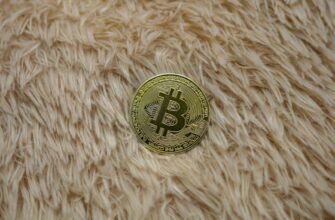What Are Locked Tokens in DeFi?
Locking tokens refers to temporarily restricting access to your cryptocurrency holdings in exchange for rewards or platform privileges. When you lock DAI—a stablecoin pegged to the US dollar—you commit it to a decentralized finance (DeFi) protocol for a predetermined period. This mechanism powers core DeFi activities like yield farming, governance participation, and collateralization while maintaining DAI’s price stability through its unique collateral-backed design.
Why Lock DAI Tokens? Key Benefits
- Earn Passive Income: Generate yield through staking rewards or liquidity mining programs (often 2-8% APY on DAI).
- Governance Rights: Lock DAI to vote on protocol upgrades in MakerDAO or other DAOs.
- Access Premium Features: Unlock higher borrowing limits or fee discounts in lending platforms.
- Enhance Protocol Security: Committed funds reduce market volatility and stabilize DeFi ecosystems.
How to Lock DAI Tokens: Step-by-Step Process
- Acquire DAI: Purchase DAI on exchanges like Coinbase or Binance, or mint it via MakerDAO using collateral.
- Choose a Platform: Select a DeFi protocol (e.g., Aave, Compound, MakerDAO) supporting DAI locking.
- Connect Wallet: Use MetaMask or WalletConnect to link your Web3 wallet (e.g., Trust Wallet).
- Approve & Lock: Specify the DAI amount and lock duration, then sign the transaction. Pay gas fees in ETH.
- Monitor & Claim Rewards: Track earnings via the platform’s dashboard and withdraw when the lock period ends.
Top Platforms for Locking DAI in 2023
- MakerDAO: Lock DAI in the DSR (Dai Savings Rate) module for fixed interest (Current rate: ~3.5%).
- Aave: Deposit DAI into liquidity pools to earn variable APY and aTokens.
- Compound: Lock DAI as collateral to borrow assets or earn COMP token rewards.
- Curve Finance: Provide DAI in stablecoin pools for trading fees and CRV incentives.
Risks and Security Considerations
While locking DAI offers rewards, key risks include:
- Smart Contract Vulnerabilities: Bugs in protocols could lead to fund loss—audit platforms like CertiK before locking.
- Impermanent Loss: In liquidity pools, price fluctuations may reduce value versus holding.
- Lockup Periods: Funds remain inaccessible until the term ends; plan for liquidity needs.
- Regulatory Uncertainty: Evolving crypto laws may impact reward taxation or accessibility.
Security Tip: Use hardware wallets and verify contract addresses to avoid phishing scams.
FAQ: Locking DAI Tokens Explained
Q: Is locking DAI the same as staking?
A: Similar, but staking typically involves securing Proof-of-Stake blockchains, while locking DAI focuses on DeFi utility like lending or governance.
Q: Can I unlock DAI before the lock period ends?
A: Rarely—most protocols enforce fixed terms. Some allow early withdrawal with penalty fees (e.g., 0.5-2% of locked amount).
Q: Are locked DAI rewards taxable?
A: Yes, in most jurisdictions. Rewards count as income upon receipt; consult a crypto tax specialist.
Q: What’s the minimum DAI required for locking?
A: Varies by platform. MakerDAO’s DSR has no minimum, while pools like Curve may require $100+ for efficiency.
Q: How does locking DAI affect its stability?
A: It reduces circulating supply, potentially increasing demand and helping maintain DAI’s $1 peg during market volatility.








